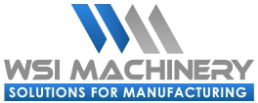ABRASIVE BELTS ARE MANUFACTURED ON DEMAND, 2 WEEK LEAD TIME
Belt Quantity: #80 Grit Belts are packaged 3 per box, while #100 Grit and finer belts come 5 per box with up to a +/- 10% variation in belt quantity from the manufacturer.
XA345
This anti-loading/anti-static product gives better sanding and a cleaner working environment. Gives a high performance and finish when sanding of surface and edges including profiles.
Application: Hardwood, Softwood, Particle Board/MDF, Veneer
Grain: Aluminum Oxide
Backing: X-Weight Poly
Bonding: Resin over Resin
Coating: Open
Color: Red
Advantages
- Anti-Loading/Anti-Static Properties
- High Performance Sanding
RKXO
RKXO is a poly-cotton blend sued for heavy duty sanding. While coarser grits are best suited for stock removal, the finer grits are ideal for finishing of raw wood. This product provides an excellent finish.
Applications: Hardwood, Softwood, Veneer
Grain: Aluminum Oxide
Backing: X-Weight Cloth, Poly-Cotton Blend
Bonding: Resin over Resin
Coating: Semi-Open
Color: Maroon
Advantages
- Heavy Duty Cloth Backing
- Premium Grain
- Reduced Clogging
- Universal Application
Selecting the Best Abrasive for Your Needs
BELT MATERIAL TYPES
Aluminum Oxide is a brown colored mineral that is tough and durable and the most widely used abrasive grain. It is coated in the entire grade range and is most commonly used in the metal, wood, leather and shoe industries.
Silicon Carbide is a shiny black, sharp, very hard mineral that is coated in the entire grade range. It is used for a wide range of non-ferrous metals such as brass, titanium, the finishing of stainless steel, shoe trades, extensively for sanding primer, sealer, and top coats of paint and clear finishes. It is also the most effective grain for removing primary metal scale.
Alumina-Zirconia is an alloy mineral of aluminum and zirconium oxide that is very effective for coarse grade stock removal of metal and wood.
Ceramic Aluminum Oxide is a mineral that is neither sintered nor fused. Compared to conventional aluminum oxide, this white mineral is two to three times tougher.
GRITS
Sandpaper is made up for various sized granules. The finer the granules, the higher the grit count; the larger the granules, the courser the grit and the lower the grit count. The grit and type of sandpaper you need to use depends on the intended application. If you are simply finishing or smoothing, you want to use an extra fine abrasive; something below 100 grit. If removing material, such as paint, varnish, or uneven blemishes, stay between 120 and 150 grit sizes. If shaping or evening out un-leveled surfaces, you want to use a course grit of at least 200.
ABRASIVE BACKINGS
Cloth-backed abrasives are renowned for their durability and tear resistance, making them ideal for heavy-duty applications. While paper-backed abrasives are light weight and lower cost compared to cloth backing abrasives. Paper-backed abrasives provide cost-effectiveness, flexibility, and conformability, ensuring effective sanding on contoured surfaces and delivers even cutting for delicate processes and finer grits. However, it does not provide the rugged durability of cloth backed abrasives.
COATINGS
Open coat refers to only a portion of the backing is covered with an abrasive grain. This type of coating reduces loading in coarser grits. The backing is covered 50%-70%, allowing more room for material buildup to expel from the grain. In closed coat the grain is applied evenly together without any voids in the coat. It delivers a longer life and infer finish and typically used in non-woodworking applications.
DMC SD 30 RCS 95 - 37" WIDE BELT SANDER - ONE STEEL DRUM ROLLER, ONE COMBINATION HEAD

CANTEK PS37DA | 37" WIDE BELT SANDER, STEEL CONTRACT DRUM, SINGLE COMBINATION HEAD
Dual sanding heads for increased productivity. The first sanding head is steel with superior calibration results, while the second head is a combination unit with adjustable platen for calibration and finish sanding capabilities.
Contact Drum and Combination Sanding Heads
1st Head: Steel Contact Drum: 10" diameter. 20 HP (14 KW). Equipped with a dial for micro-adjustment according to various grit being used.
2nd Head: Combination Head: 5 ½" diameter rubber drum & 2 5/8" wide platen, 15 HP (11 KW). Platen can be easily raised or lowered depending on whether you are calibrating or finish sanding. Equipped with a dial for micro-adjustment to the sanding drum according to various grit being used.
Steel Contact Drum
The first head is a precision machined and grooved steel contact drum, ideal for calibration sanding. The height can be micro adjusted to compensate for the various grit sandpaper.
Accurate Adjustment of Each Drum and Platen
Both the first and second contact drums can be micro-adjusted for belt grit compensation. In addition, the combination unit has an adjustable platen which can be raised or lowered depending on whether you are performing calibration or finish sanding. The quick-release outboard support allows for fast belt changes.







